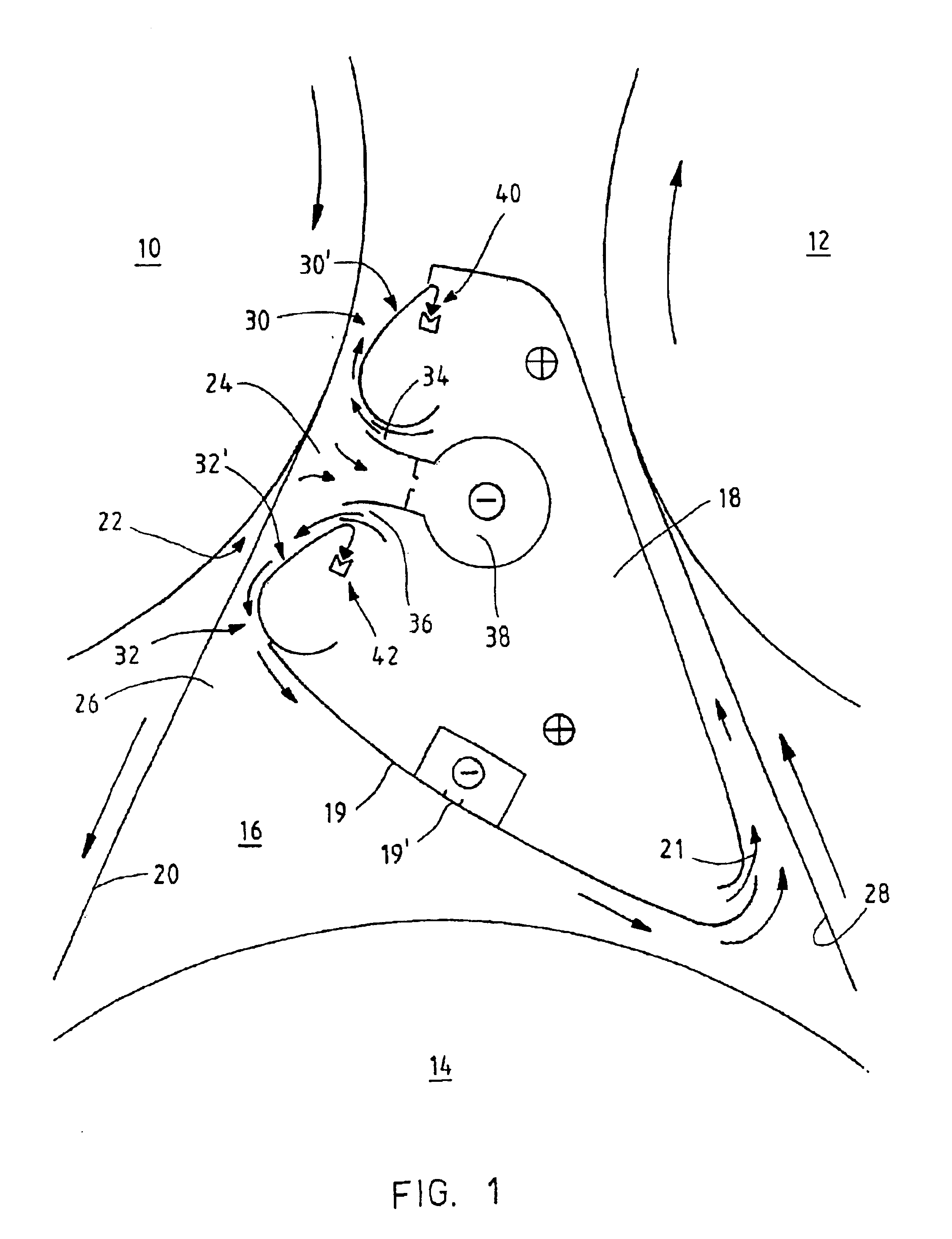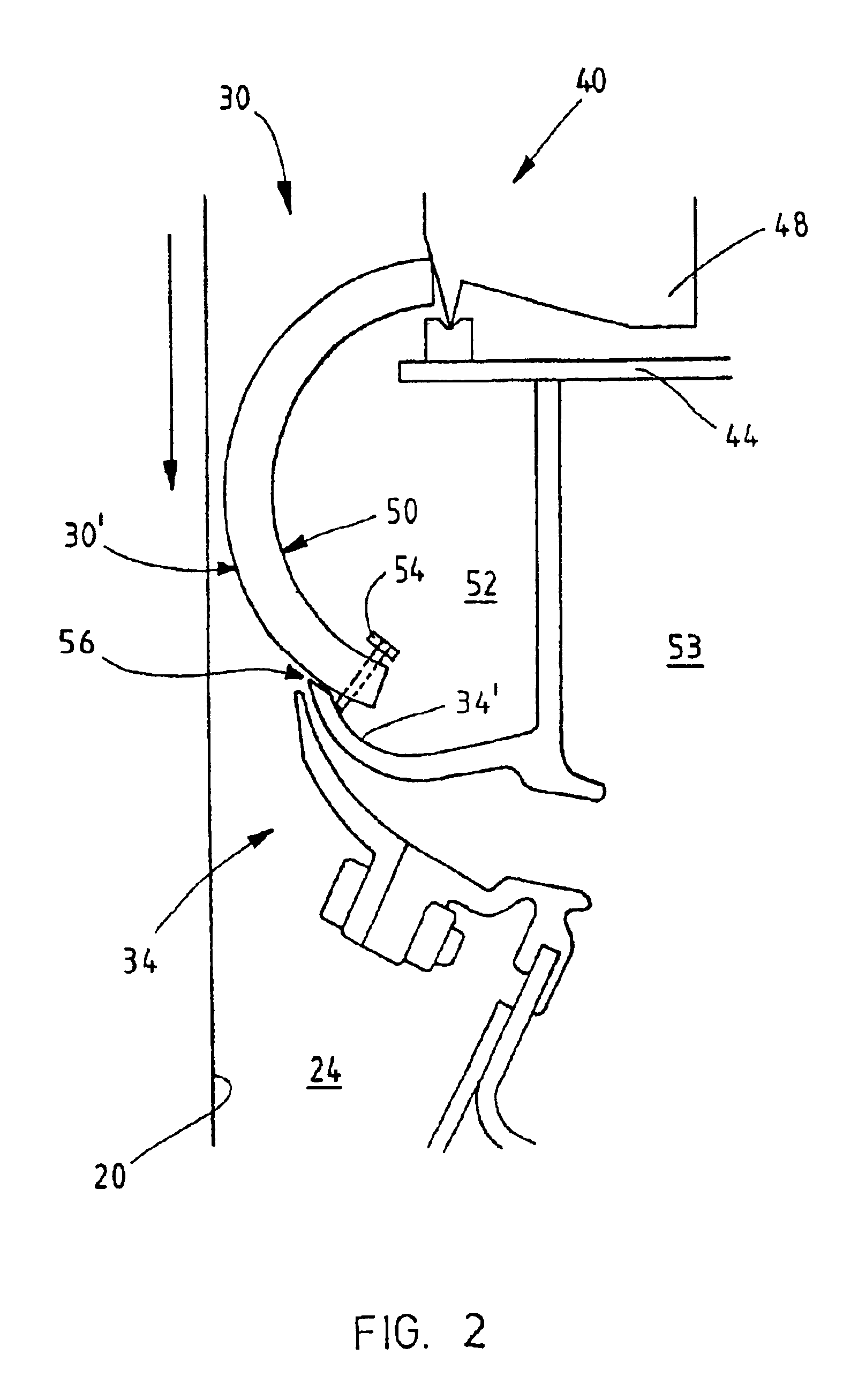Blow box for controlling the web run
a web run and blow box technology, applied in the field of blow box, can solve the problems of increasing the required blowing effect, increasing the energy cost, and increasing the energy cost, and achieve the effects of facilitating the adjustment of the distance of the blocking member, and reducing the pressure in the space behind the blocking member
- Summary
- Abstract
- Description
- Claims
- Application Information
AI Technical Summary
Benefits of technology
Problems solved by technology
Method used
Image
Examples
Embodiment Construction
FIG. 1 shows a cross section of the drying section of a paper machine provided with a single wire run, a pocket 16 formed between its two drying cylinders 10, 12 and a suction roll 14, where a blow box 18 according to the invention is arranged. The blow box 18 is arranged between the first drying cylinder 10 and the second drying cylinder 12 in the running direction of the wire 20, which supports the web.
The blow box 18 is arranged to cover the wire run 20 at a point where the wire is released from the first drying cylinder 10, in other words at the opening nip 22 between the wire and the drying cylinder. The blow box creates in this point a intensified negative pressure region, in the space 24 between the wire 20 and the blow box 18, whereby this space is sealed from the rest of the space of the pocket 16.
In the solution presented in FIG. 1 the blow box does not cover the wire run 20 on the later part 26 after the opening nip between the first drying cylinder 10 and the suction rol...
PUM
 Login to View More
Login to View More Abstract
Description
Claims
Application Information
 Login to View More
Login to View More - R&D
- Intellectual Property
- Life Sciences
- Materials
- Tech Scout
- Unparalleled Data Quality
- Higher Quality Content
- 60% Fewer Hallucinations
Browse by: Latest US Patents, China's latest patents, Technical Efficacy Thesaurus, Application Domain, Technology Topic, Popular Technical Reports.
© 2025 PatSnap. All rights reserved.Legal|Privacy policy|Modern Slavery Act Transparency Statement|Sitemap|About US| Contact US: help@patsnap.com



